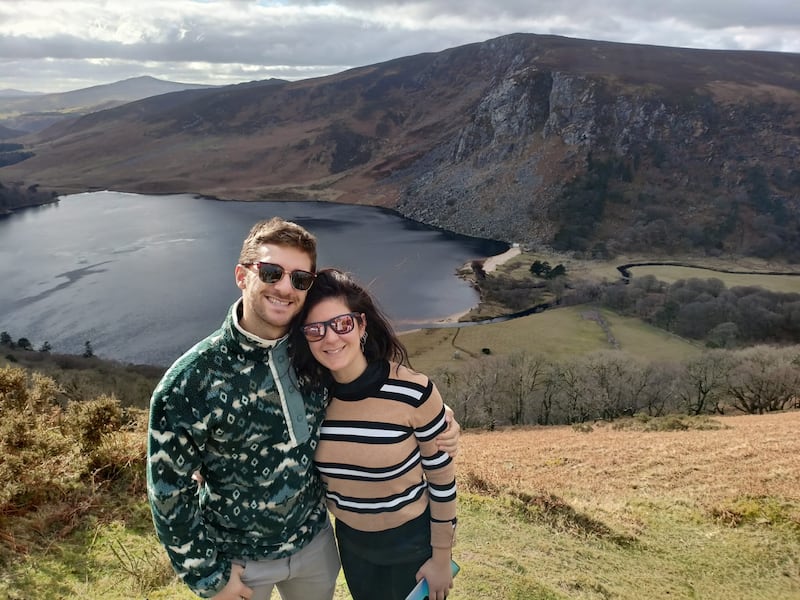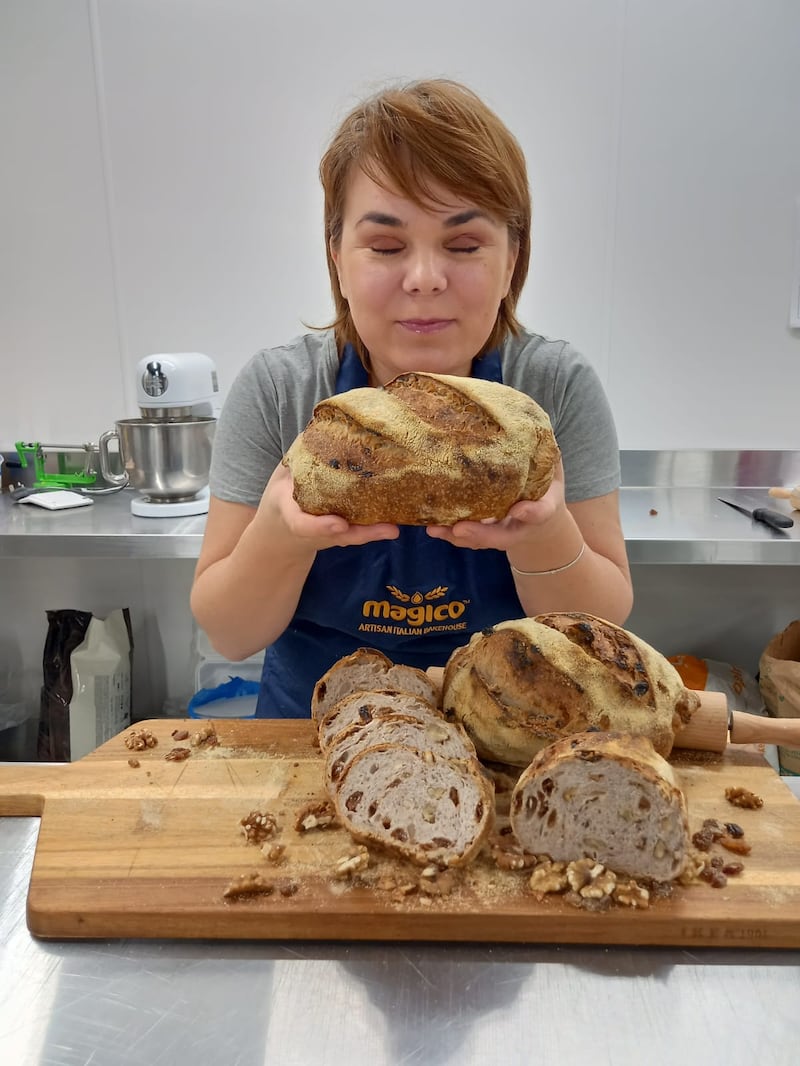Ireland is becoming an increasingly diverse country, with 12 per cent of the population made up of non-Irish citizens.
Some 630,000 of the State’s residents identified only by a nationality other than Irish in the Central Statistics Office’s 2022 Census, an increase from 535,475 in 2016. The proportion of residents who identified as “Irish only” decreased by 3 per cent, while the proportion with dual Irish nationality rose by 1 per cent.
The biggest groups of non-Irish people are Polish and UK citizens, followed by Indians, Romanians and Lithuanians.
While the numbers in the Polish, Lithuanian and UK communities have decreased, the number of Indian nationals increased from 20,969 to 56,642; Romanians from 28,702 to 42,460; and Brazilians from 15,796 to 39,556.
RM Block
Many of the Indians who recently arrived in Ireland are postgraduate students who chose to complete their education in an Irish university. Many speak English in addition to Indian native languages, and Ireland offers simpler visa processes and affordable education compared with other English-speaking countries.
Kumar Parakram Singh (33) from Bihar, Eastern India, enrolled in a data analytics masters course at National College of Ireland in Dublin three years ago and now works as an analyst for a multinational company in the city. “Ireland has become a tech hub for us, there are great opportunities in this field,” he said.
According to Singh, good work opportunities exist in India too, but “because of the high population density there’s too much competition”.
“The new generation of middle-class Indians are keen to explore different countries and lifestyles,” he added.
Ajeet Yadav (30) from Mumbai came as a Master’s student five years ago and now works as a software engineer in Cork. He said that the Irish “welcoming nature” is reflected by the country’s migration policies: “I wanted to pursue my studies in a European English-speaking country, and I chose Ireland over the UK because back then the UK would only allow me to stay in the country six months after my studies, and it didn’t feel enough to find a stable job.”
Ireland (and now the UK) allows Indians on a student visa to stay for two years after the completion of their courses. “It’s very inclusive in general,” explained Yadav. “We have immediate access to the same benefits Irish citizens have and this makes you feel part of the society. I never experienced discrimination.”
“Ireland gives you great career opportunities, especially in sectors like mine,” he said.
Yadav knows a lot of Indians plan to go back home at some point, to stay with their families and because they miss Indian life and traditions. “I think the Indian warm character can be found in Irish people too. I’ve found a lot of Irish like-minded friends and I have a good life here. If I manage to fly home once a year, then it’s okay.”
Indian culture in Ireland was celebrated in mid-August at the Dublin Ratha Yatra festival – a parade of chariots which takes inspiration from ancient Indian religious street processions and is held internationally in devotion to the Hindu Krishnaism figure of Lord Jagannath.
Aarushi Samal (15), who travelled to the festival from Galway, inaugurated the parade with a traditional dance. She came to Ireland from India in 2016 but has maintained a bond with her culture by practising dance.
“Work made us stay, but it’s also a lovely country with lovely people,” said her mother Bina Patro. “Now it feels like home.”
Italians are less likely than Indians to move to Ireland for education – possibly because of the language barrier – but many of them leave Italy some years after finishing their studies as they’re tired of plodding along with a fragile and stagnant job market back home. Youth unemployment in the country is over 20 per cent, and the Italian government is discussing an hourly minimum wage of €9, compared with the Irish €11.50; and the cost of living is not much lower in Italy’s big cities. The UK becoming less accessible to EU citizens after Brexit might also have played a role in the increase of English-fluent Italians choosing Ireland. With a rise of 7,000 people, Italians became the seventh biggest non-Irish community in the last census, with 18,319 residents.
Gabriele Braga (28) from Genoa, northern Italy, arrived in Ireland last January and is now a violin teacher in a Dublin music academy. He moved with his girlfriend, Chiara Caruzzo (26), as they were both between jobs. They live in Swords, Co Dublin.

“Here, music can be a real and respected job. In Italy, that’s not possible,” said Braga, who after graduating with an Arts major had hoped to start his teaching career in Italy. He was working underpaid jobs instead and could not get a proper job interview.
“One of them was a proper scam, and I only found out after driving two hours to get there,” he explained.
“In Italy, I wouldn’t make the same money I make here even if I had a permanent teaching job and gave music classes on the side. But life there is not as much cheaper as they say: last time in Genoa, I paid €10 for two focaccias – and it’s just water, oil and salt.”
When asked what he thinks about Italians increasingly moving to Ireland, Braga said that “skilled workers will go where they see possibilities of progressing both professionally and financially”.
“Ireland might even be just a good transition place – one could decide to move to the US or Australia later, like the Irish do – or to come back to Italy when older, with a good pension.”
Marta Pulcini (33) moved in November 2022 and chose Galway, as its small-city vibes reminded her of Seveso, her hometown in northern Italy, 25 kilometres from Milan. She is a part-time receptionist in a guest house, where they also provide her with accommodation, and she also works for an agency providing internships to students.

Pulcini said she has been in love with the English language and with Ireland since primary school, but the decision to move came after years of disappointment with Italian work conditions. “First, an internship in a multinational corporation in Milan with a bare minimum stipend where after six months I was told with little notice they had nothing to offer me. Then it was a family-run business in the province of Como, where in six years I’ve never seen opportunity for growing or meritocracy.”
After being demoralised by job hunting in Italy, in Ireland she quickly found two jobs that make her feel “motivated and never stressed. Managers and co-workers are always ready to help. Ireland feels like a much more ‘solid’ country”.
Romanian national Giulia Zan (36), who emigrated to Italy at 18 years old, convinced her Italian husband Matteo Zan (46) to move in 2016, as her brother was already living in Ireland and could provide support. They eventually got to open an Italian-style bakery, Magico, in Athlone, where they live. They have two daughters born in Ireland.

“In Italy we felt stuck, we had never found so much work. Here we felt welcomed and as if we were finally awake after a long sleep,” she said.
In Italy it was hard to get such reward from their hard work, but Zan said she has higher hopes for the improvement of work conditions in her home country, Romania: “In 10-15 years, maybe it will be like Ireland.”
Romanians already used to emigrate to Ireland in the 1980s, when their country was still under its communist regime. Ireland’s emergence as an important IT hub has made it even more attractive, but not all Romanians come to work with data and computers.
[ Why is Ireland’s Polish community returning home?Opens in new window ]
Leia Mocan (36), a multimedia artist from Cluj-Napoca, north-western Romania, came to Ireland in 2013 and earned a BA in Visual Arts and Photography from Griffith College. “In Romania I studied oil painting, but I soon realised I couldn’t make a living with it,” she said. “There’s no government support for the sector and I come from a humble family. I understood I had to emigrate.”
Together with her partner, Catalin Chira (38), who worked in IT and was willing to relocate, they chose Ireland as they spoke English and had some friends in Dublin offering a spare room.
“Here I found the head space to focus on arts again,” explained Mocan. Her art raises awareness of environmental issues, not only as a theme but also through the materials she uses – waste material, natural elements, sustainable pigments.
“When I arrived in Ireland, I was shocked by the amount of packaging I would have to throw away after buying groceries – it’s definitely less in Romania,” she said.
Environment aside, Mocan said in Ireland the importance of the arts and culture sector is well emphasised through representative councils and funding opportunities. “I felt like I had more options, and I’d say this thought is common among Romanians who emigrate to Ireland.”
[ New Voices offers fresh perspective on art in IrelandOpens in new window ]
The Centre for Creative Practices, which specifically promotes migrant artists and intercultural arts in Ireland, helped Mocan to access bursaries, make her own network and have her first shows and exhibitions. Besides environmental awareness, her artworks reflect her migrant identity and Romanian culture and traditions she wants to bring to Ireland.
“I settled in Ireland, I have a full life,” she said. “But Romania is home, so you never know.”

















